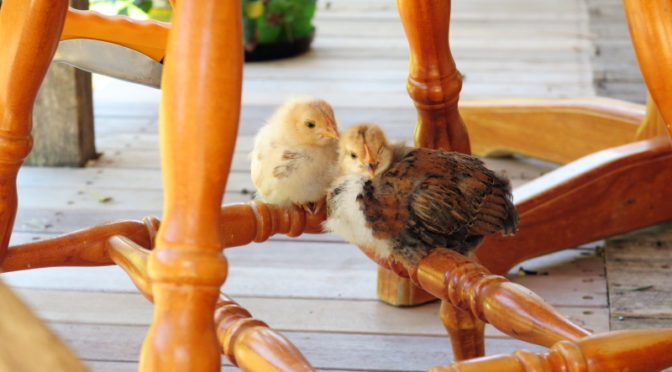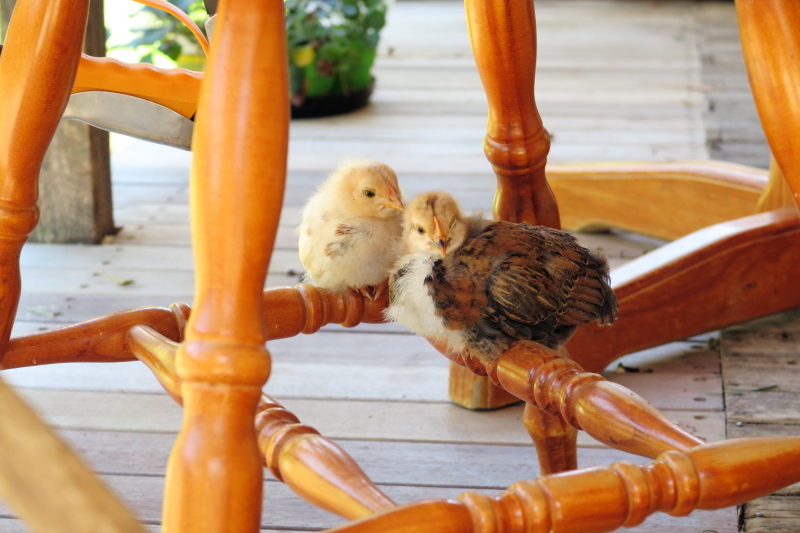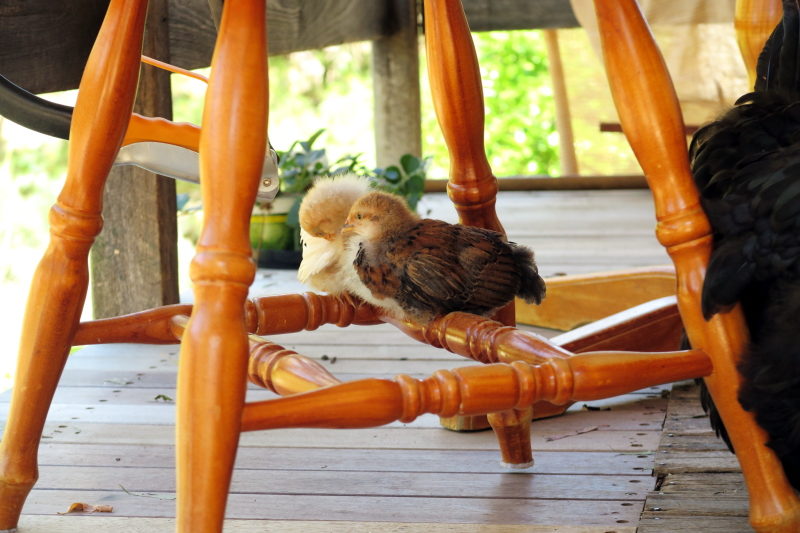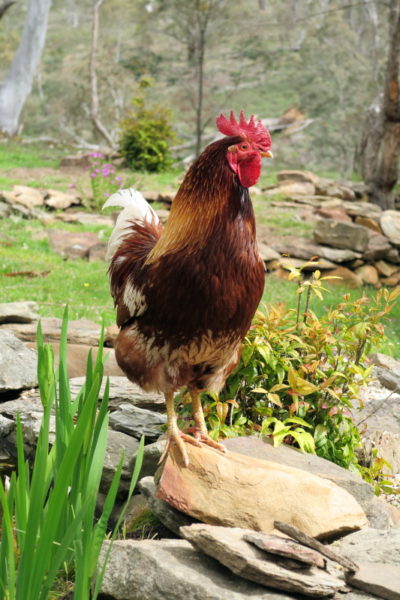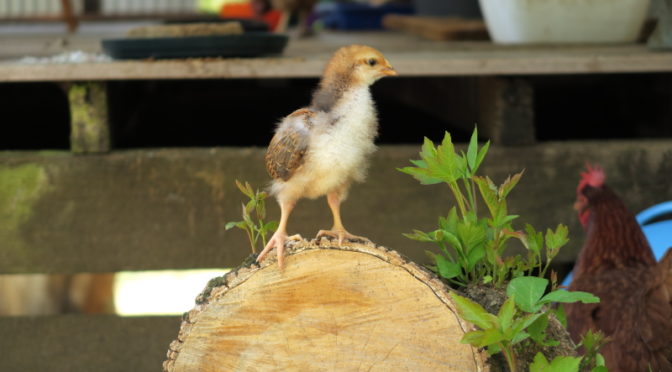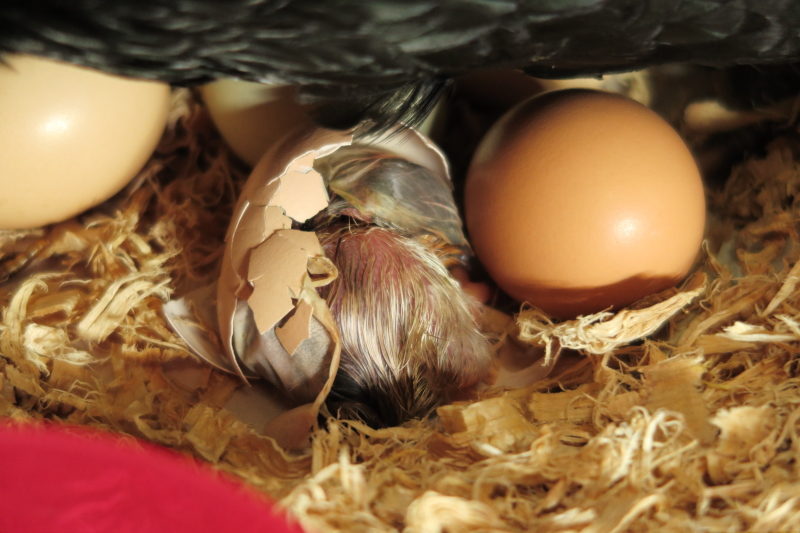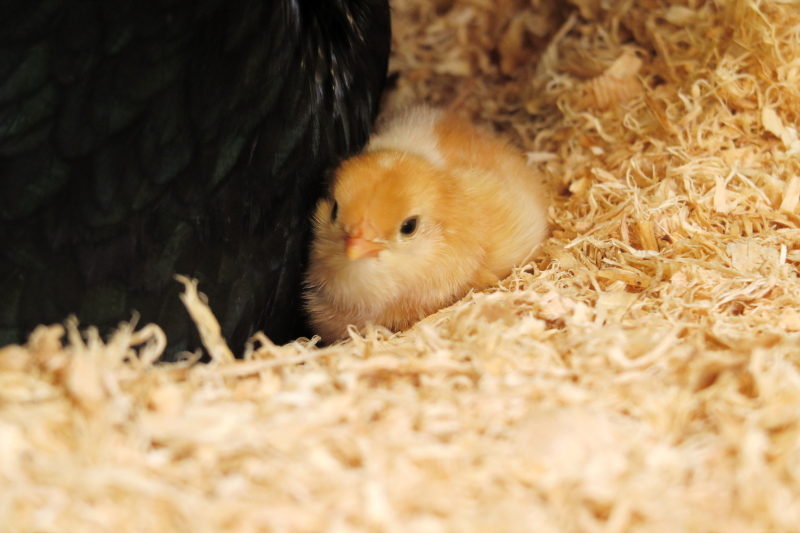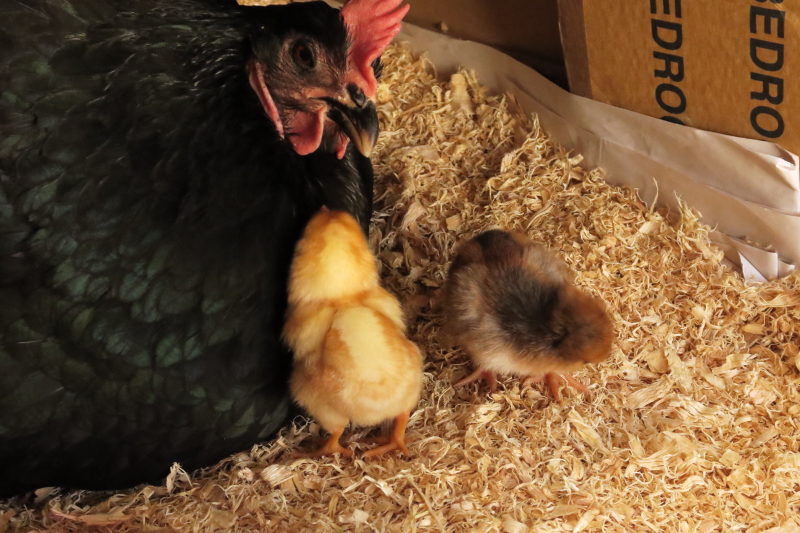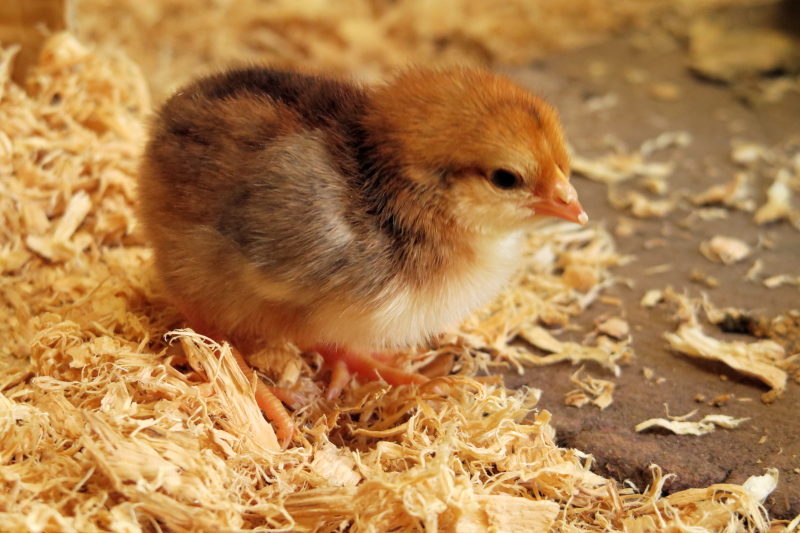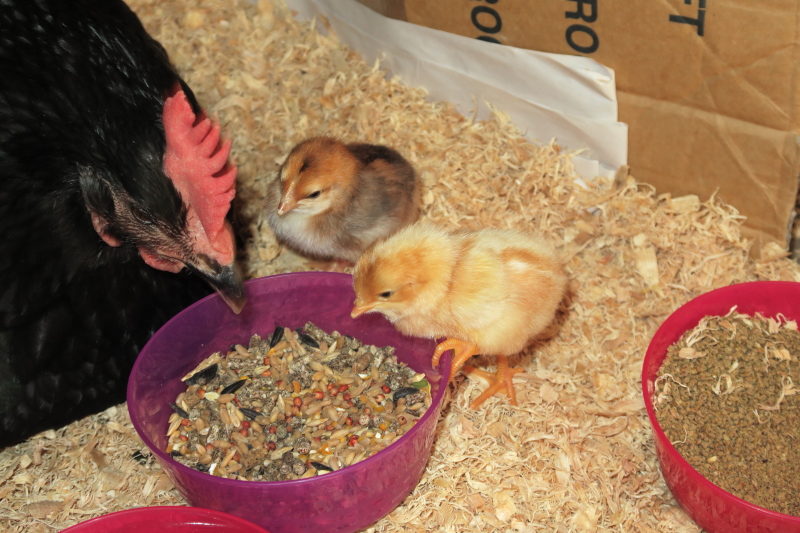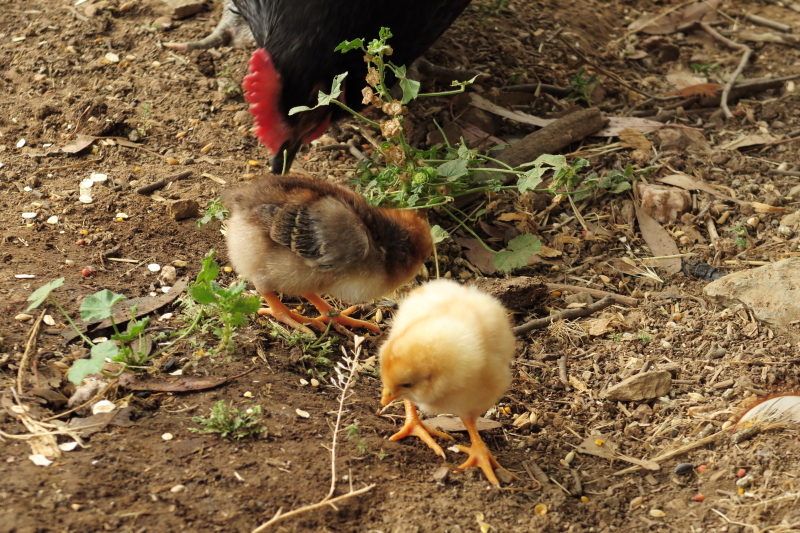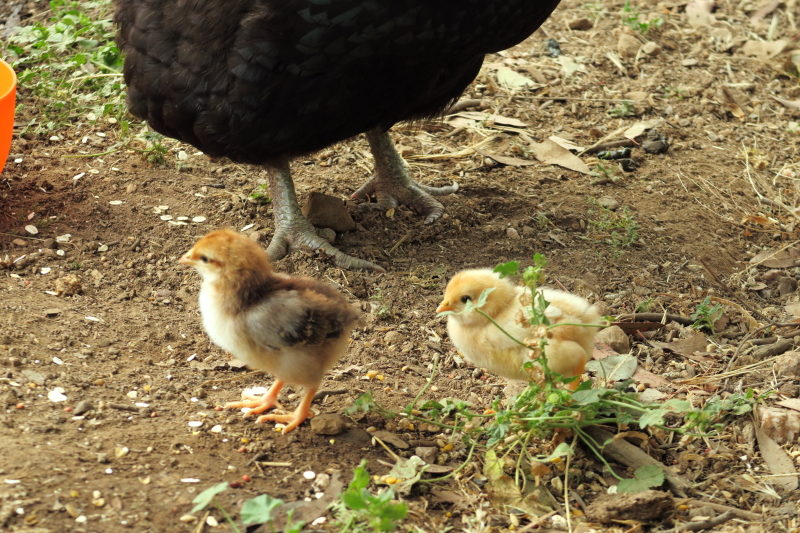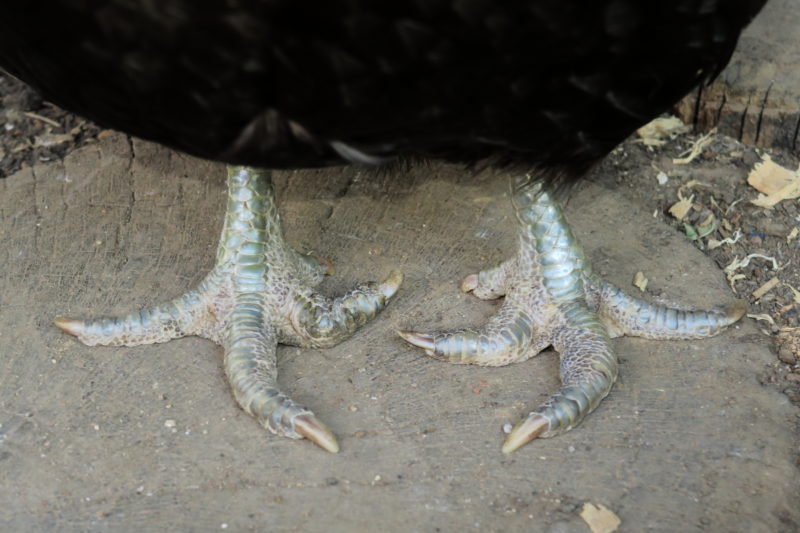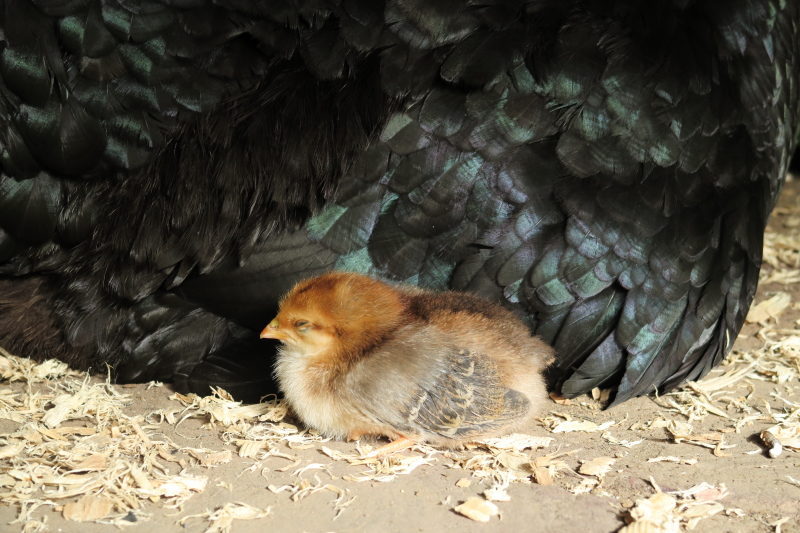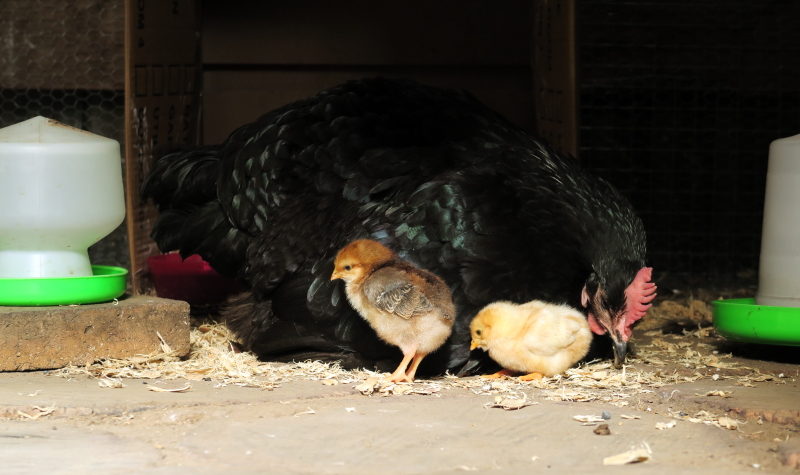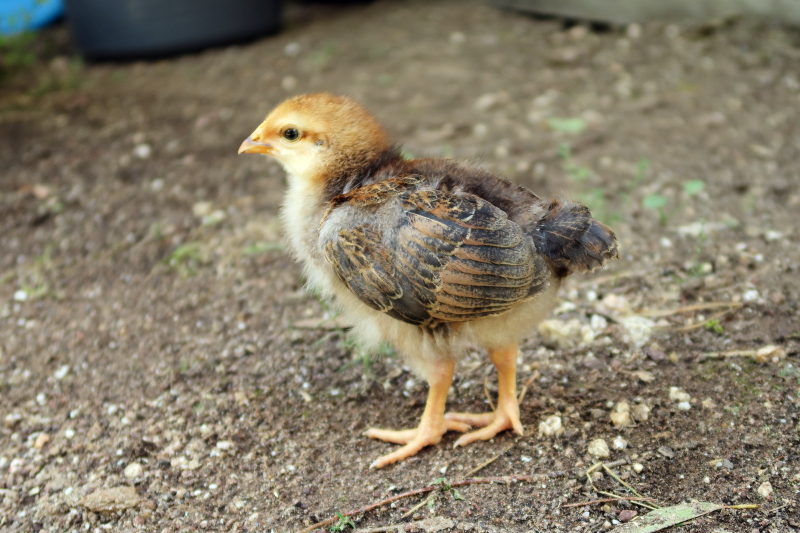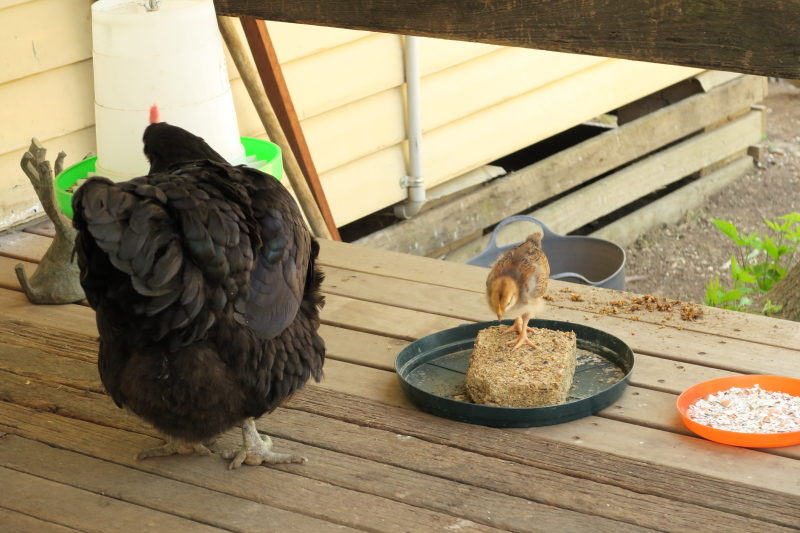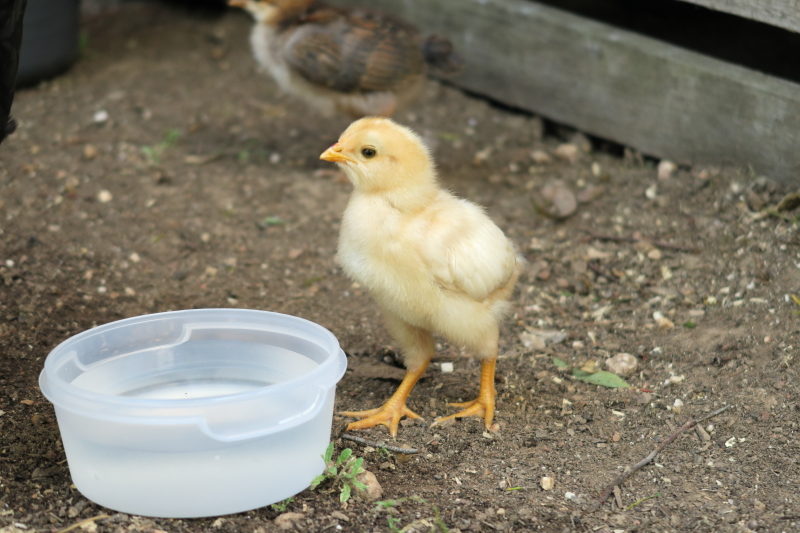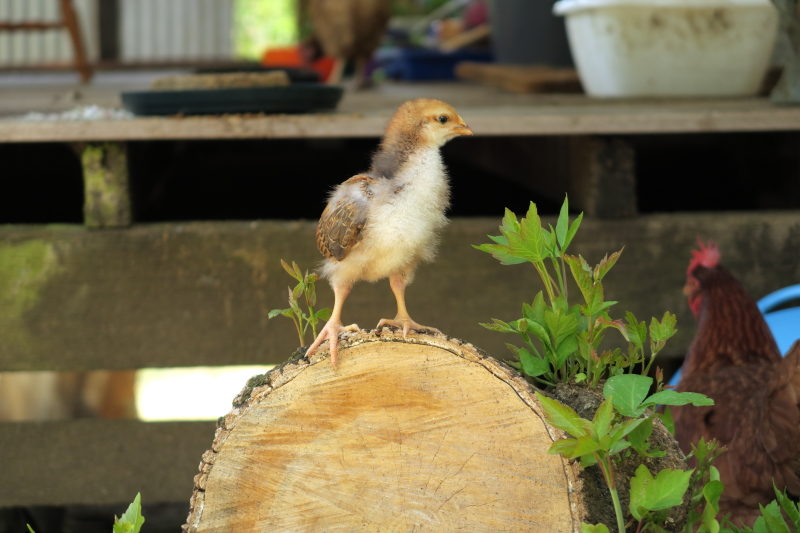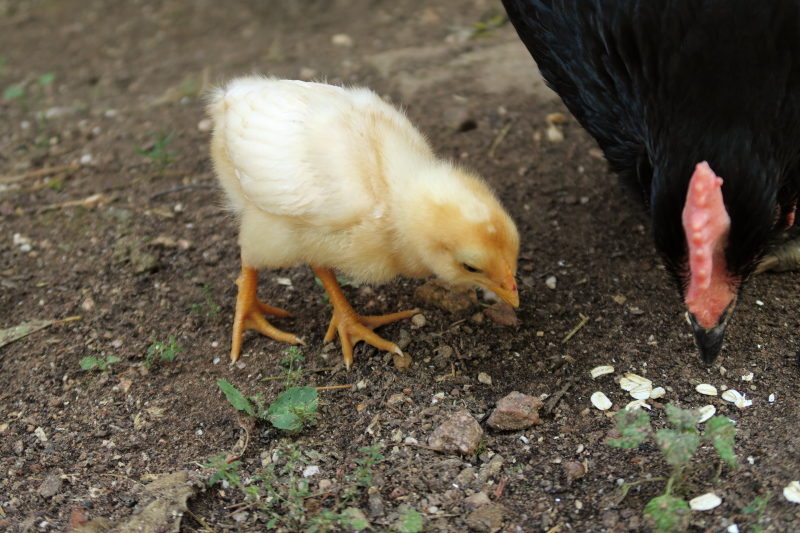So another week has passed since I started writing the first post on the chicks and their progress and wow, have the chicks grown since then! They are starting to get their feathers, and show their true markings. We know that one of them is a Welsummer (that’s the breed) and this is one of the breeds that you can sex a chick from birth by their markings. And this chick is definitely a cockerel.
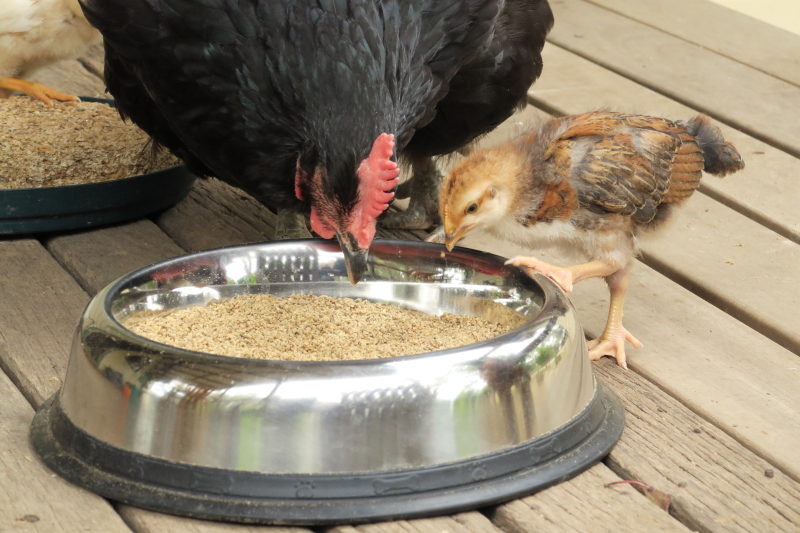
The other chick, well that remains to be seen. At the moment the only thing we know is that it is from a blue egg and that means it has to be either an Ameraucana or an Araucana. Now I had thought that Harriett (HH) was a black Araucana but on investigating the identity of the other chick, I have ascertained that Araucanas don’t have rumps and HH definitely has a rump and tail which makes her a Ameraucana, specifically a silky black Ameraucana. Now why is this important? Well there is a chance that the chick is hers and HP’s which would make the chick an Easter Egger as they are known. The chick is certainly not a Lavender Araucana that it is meant to be!
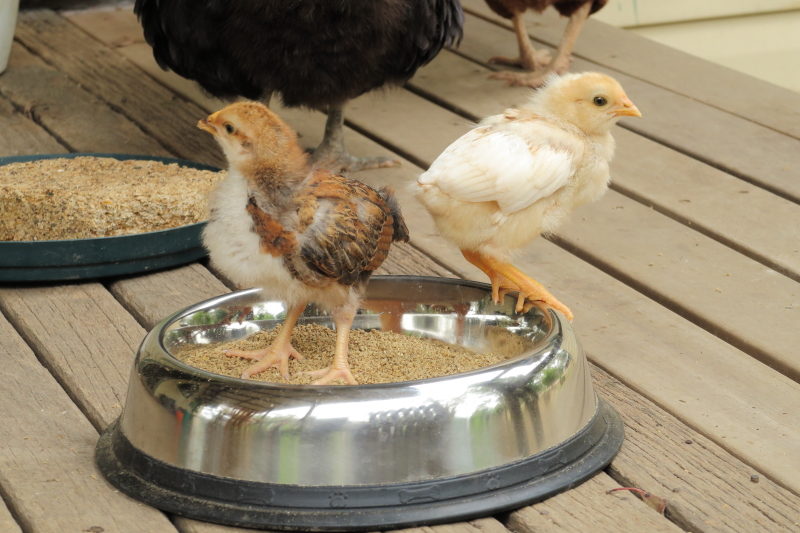
So, as the chicks have grown in size, they have also grown in confidence and are frequently to be found up on the veranda with mum. They are also practicing their skills, balance is one of them along with seeing if they can preen and balance on the base bar of a chair!
Food remains a favourite subject and they have taken to all sorts of measures to obtain it.
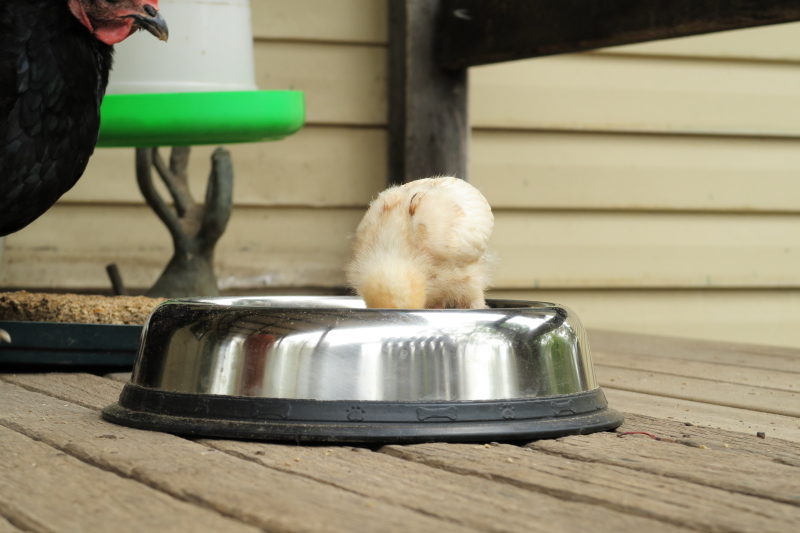
They, like all of the chooks, absolutely love porridge oats (rolled oats), so every morning there is a small scattering to be found in their chick starter which they (and all of the others) love. Luckily, I took the decision that the chick starter we were to have was going to be an unmedicated version, so not one with antibiotics in it. In theory, if not in practice, you are not meant to eat the eggs of hens who have eaten medicated food or had antibiotics. Now can someone please explain to me how exactly I am meant to prevent the rest of the flock from eating the chicks food without keeping the chicks and mum totally separate from the rest of the flock and then having to deal with the consequences of trying to integrate the chicks into the flock at a later date? Also, with the chicks as part of the flock now, the entire flock is on the look out for predators (here other than the very occasional snake (only the second) the main predators are all avian!)
My birthday also saw another major step milestone with the chicks. Mum took them up to roost with her! We had no idea that they could ‘fly’ that high yet and tbh, it was a little concerning to say the least. How were they to get down safely? More to the point, could mum get down safely. It had been quite some time since she last roosted and the roost had been altered and the ‘ensuite’ installed since she was last roosting.
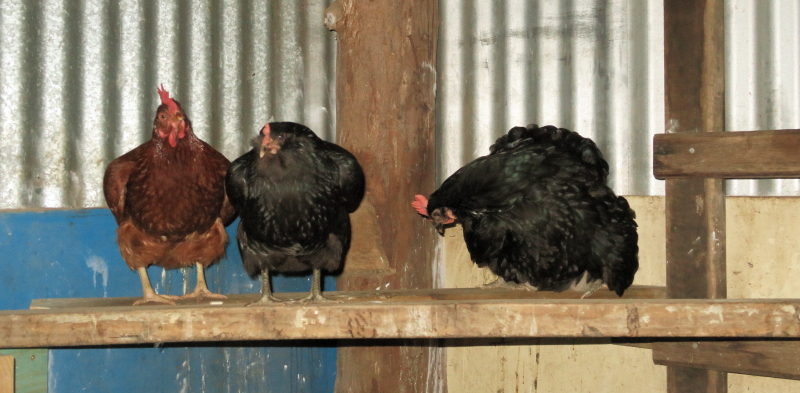
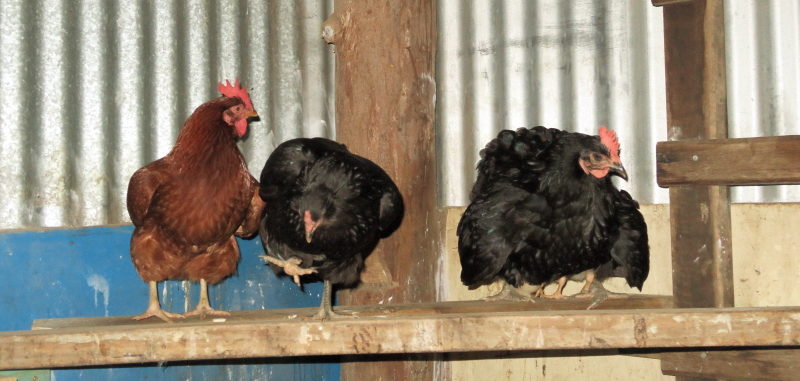
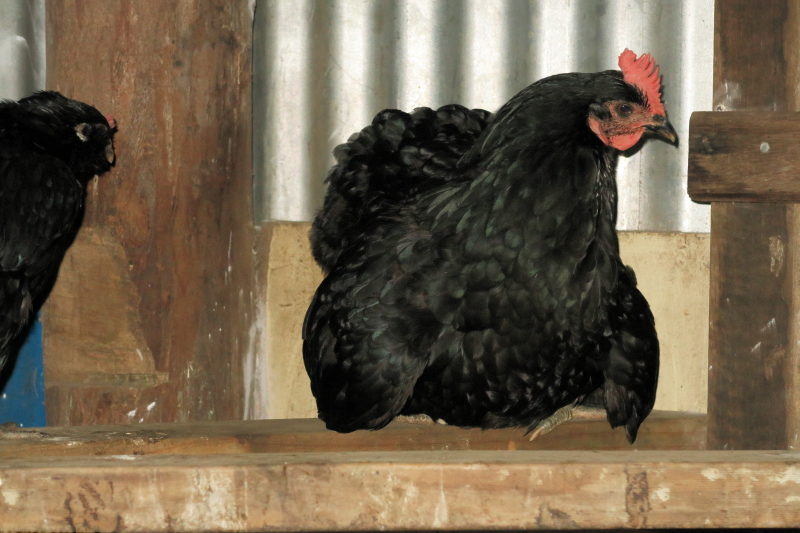
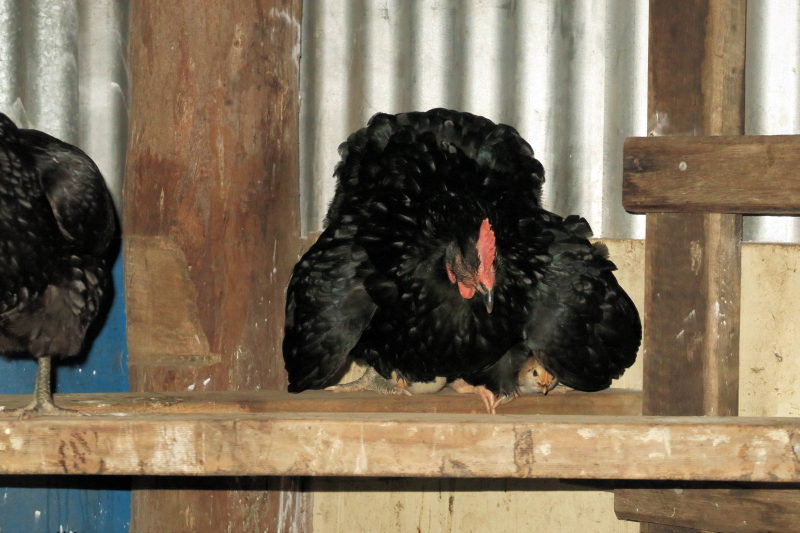
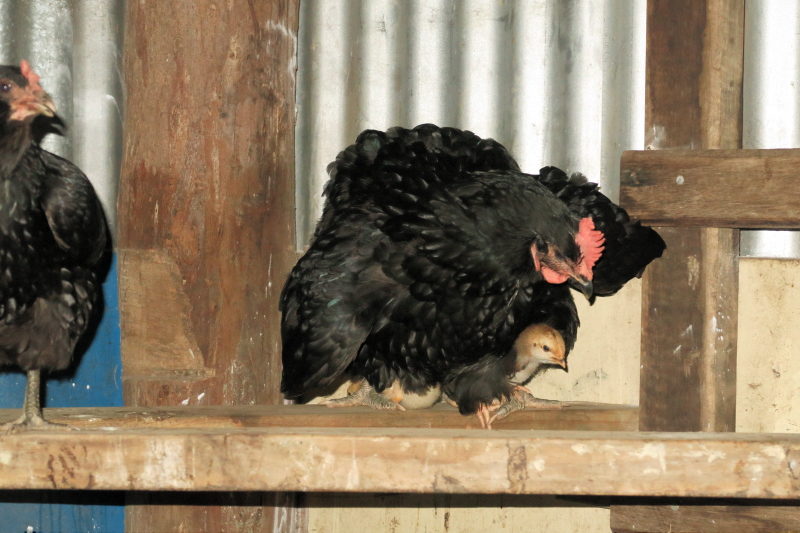
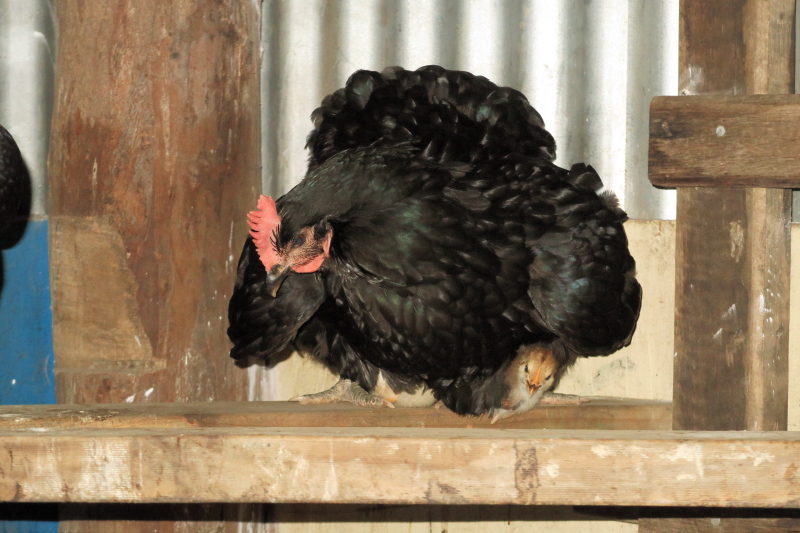
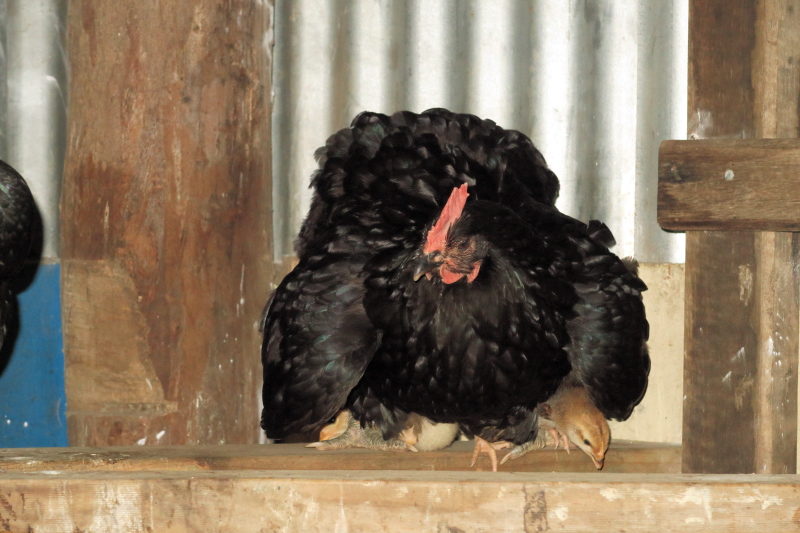
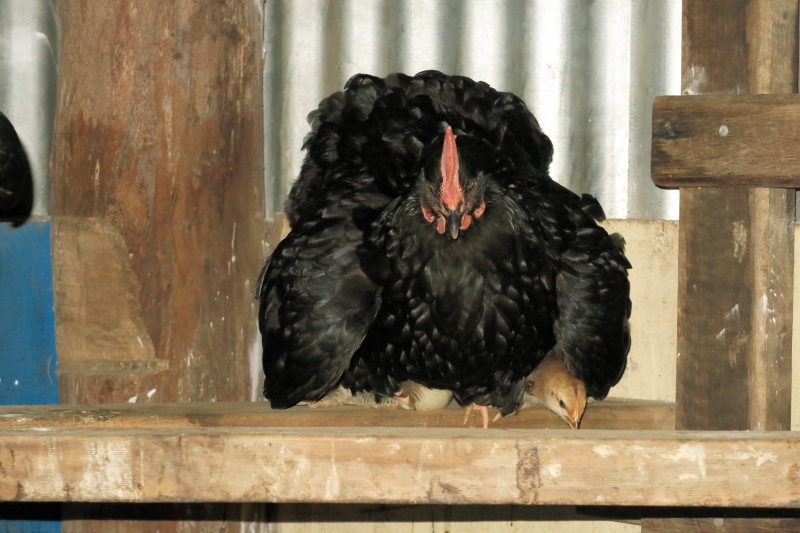
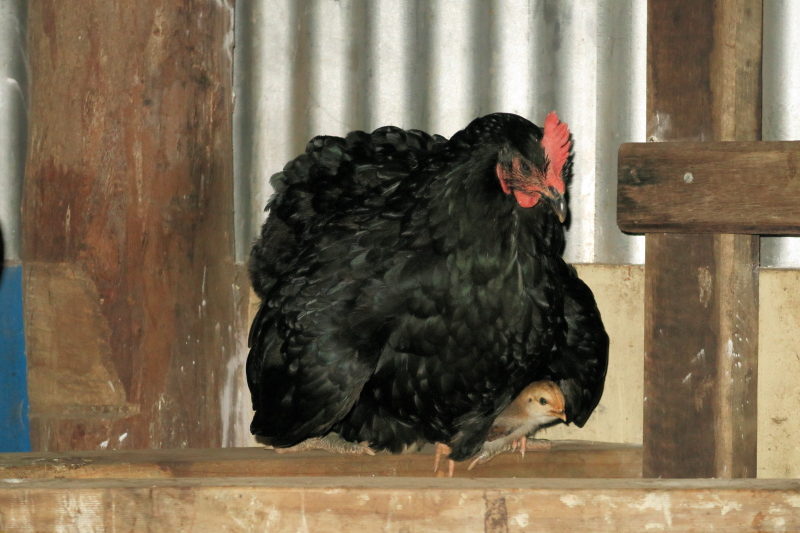
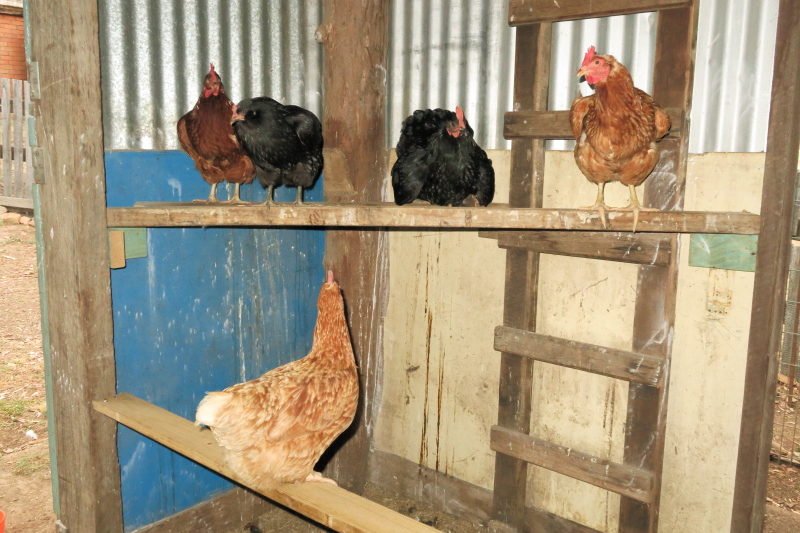
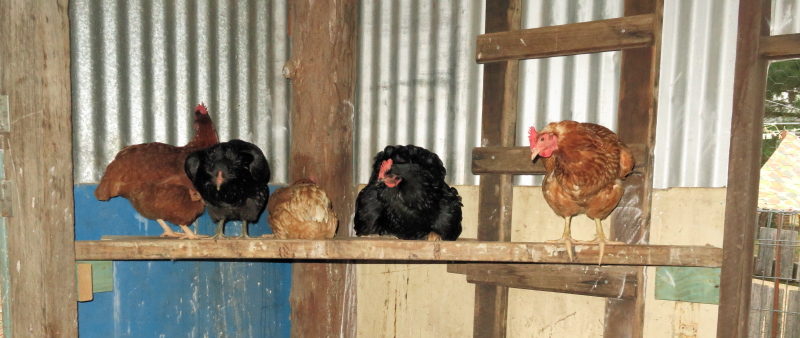
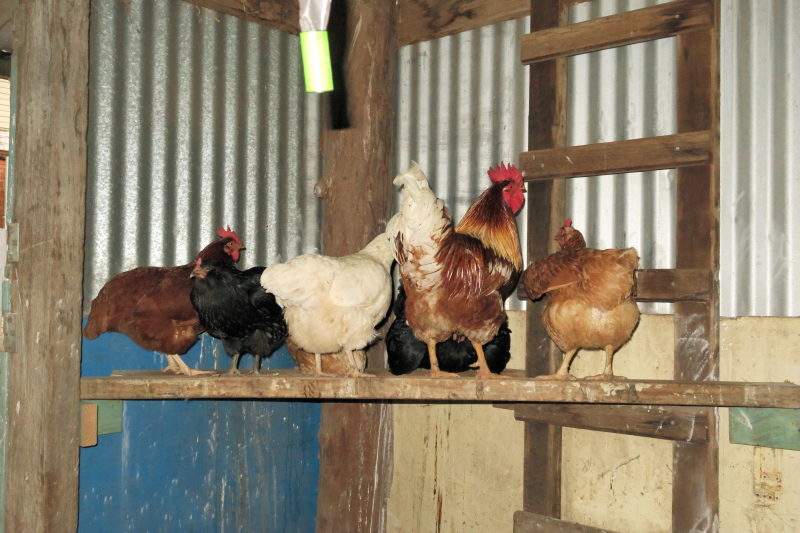
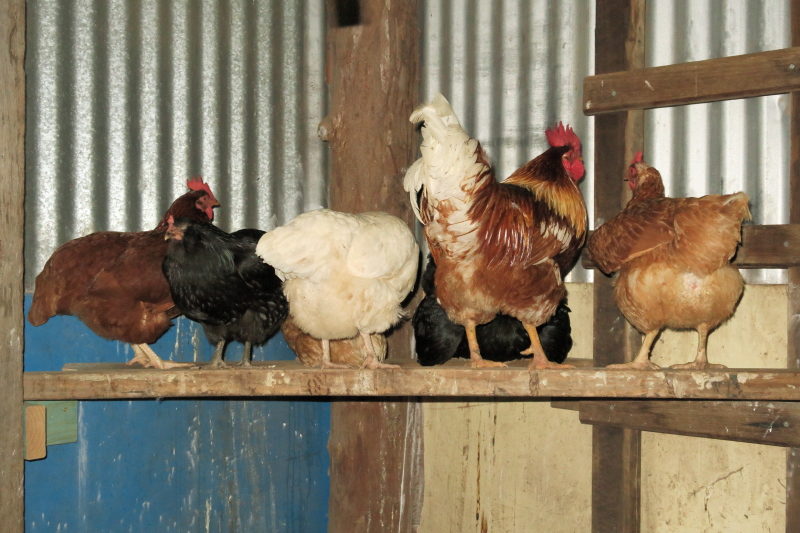
Since then, however, she has taken them up to roost every night. I will concede that we have dropped the height of the roosting perches a touch (OK by about 12 inches but they were a touch high if we are honest).
Mum has continued to be a really great mother, catching all sort of prey for the chicks, though some prizes have been too good for the chicks to get anything other than a lesson on how to catch and kill it. Not eat it mind you. Mum is now starting a slow moult and she has a lot of feathers to lose and a lot to replace. Prey that chicks get to eat include caterpillars, spiders and crickets. Prey they only get lessons in, and that are prized to the point of fights breaking out with others if they are around, include lizards, newts and mice. Yep, mice.
At least 3 of our hens will eat the mice that are caught in the mouse traps overnight in the chook house. The traps are behind a wire mesh that the chicks can’t get to let alone the chickens. At first I was taking the dead mice for a long morning walk, leaving them at the very top of the track where they would not attract the attention of snakes into the garden or chook house. Usually they are taken by the ravens, magpies, or magpie larks amongst others. But one morning, I happened to put the trap down on the bench rather than in the bucket and before I knew it, the trap and dead mouse had been snatched by VV2 (Vickie’s replacement, also called Vickie). It was all I could do to retrieve the trap, let alone the dead mouse and it was clear it was a prize to be kept. Various other chooks tried to get in on the act, but VV2 was having none of it and the next time I looked, there was no dead mouse to be seen. At least I know the mice are free range and organic!
A couple of days later and I had another dead mouse, so this time I presented it to mother – she at least is not laying eggs at present and needs the extra food with her moulting and also needing to put weight back on after sitting on eggs for so long. The chicks got a lesson on killing a dead mouse, it was well and truly killed, then the best parts eaten and a tiny amount allowed to the chicks before that too disappeared without a trace. This morning there was another dead mouse, (I only get one every couple of days now) and I gave it to mum again. She duly killed it, ate the best bit and then left the body. It is, sorry was, way too big for the chicks and the pecking order was followed. With JJ2 sitting in a nesting box, mum not apparently wanting any more of it, it was left to VV2 whom proceeded to eat it. Now if they can just catch them…
Mum is also exceptionally comical and exceptionally good at catching crickets. It is wonderfully entertaining watching the chooks chase crickets across the ‘lawn’. They look demented but they are exceptionally good at catching them so it is probably a really good thing that walking through the garden you send swarms of them jumping away from you! They do appear to be making a slow indent on the numbers in the actual garden, but in the meadow and the paddocks? Nah – they still have thousands left to go…
And as for the identity of the little ginger chick? It still remains a mystery at present. I am beginning to suspect it is actually a cross between two of our chickens, Harriet, the silkie black Ameraucana and HP who is a cross with at least a Rhode Island Red. Why the chick is still ginger in colour remains a mystery, but now that feathers are starting to form we are seeing much more in the way of browns and chestnuts coming through in the markings, though the overall colour remains much of the base of HP…
So that pale band just about his legs. That is what the chick looks like, sorry looked like, this morning until it took an exceptionally thorough dust bath in a newly created flower bed…
And this morning, it was 1½:1½ on the chooks verses 3 lizards that were trapped in the bottom of a bucket. I know at least 1 lizard escaped but they are prized eating and…
